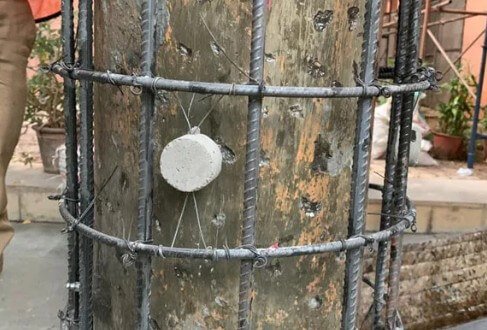When it comes to protecting metal structures from the relentless effects of corrosion, choosing the right Sacrificial Zinc Anode is crucial. Without proper protection, expensive assets like boats, pipelines, and concrete structures can spoil rapidly. The right anode sacrificial system can extend the lifespan of these investments dramatically. Understanding what to look for in a Sacrificial Zinc Anode will help you make an informed decision that guarantees superior Zinc Anode Protection and long-lasting performance.
Why Sacrificial Zinc Anode Are Essential for Corrosion Protection
Corrosion is a natural and unavoidable process when metal structures are exposed to moisture, oxygen, and other environmental factors. A Sacrificial Zinc Anode plays a critical role in mitigating this damage by offering itself up to corrode in the place of the protected structure. This method, commonly known as Cathodic Protection Anodes, ensures that the protected metal remains intact. Without Zinc Corrosion Protection Anodes, structures such as ships, offshore platforms, and reinforced concrete would succumb to early failure. Understanding the crucial function of anode sacrificial systems is the first step toward selecting the correct anode in your application
Understanding the Role of Sacrificial Zinc anode System
The principle behind a sacrificial system depends on galvanic corrosion, where a more reactive metal (zinc) corrodes instead of the protected structure. In a specific zinc anode protection setup, the anode releases electrons during corrosion, which migrate to the protected metal, preventing its degradation. The selection of the right size and type of sacrificial zinc anode ensures sufficient sacrificial current over time. You should consider material compatibility, current requirements, and operating temperatures. Various environments, such as saltwater, freshwater, or soil, affect corrosion rates. A professional engineer often analyzes these conditions to calculate the correct mass and the number of required anodes.
Factors to Consider When Choosing a Sacrificial Zinc Anode
Selecting the proper Sacrificial Zinc Anode involves careful consideration of important factors. First, assess the environment where the anode will be used. Marine environments, freshwater locations, and buried concrete structures each require specific types of anodes. Secondly, consider the size and material of the asset you wish to protect. Larger structures will naturally require larger or multiple Concrete Zinc Anodes for adequate Zinc Anode Protection. Lastly, the anode’s design must match your specific project requirements, whether or not it’s for a pipeline, a ship’s hull, or a concrete beam
Anode Size and Placement in Effective Protection
Size and placement play a critical role in the effectiveness of a Sacrificial Zinc Anode. An anode that is too small for a large structure will corrode quickly and fail to provide sustained Zinc Anode Protection. Conversely, an oversized anode may be inefficient and unnecessarily costly. Proper placement is similarly important. For marine vessels, anodes have to be positioned where corrosion is most aggressive, inclusive of close to propellers and rudders. For reinforced concrete, Concrete Zinc Anodes have to be strategically installed to protect crucial stress points and joints, ensuring comprehensive corrosion mitigation.
Assess the environment: Water, Soil, or Concrete Exposure
Before selecting your Cathodic Protection Anodes, assess the environment where safety is needed. In freshwater, water resistivity and conductivity directly influence the anode’s performance. For Concrete Zinc Anodes, the alkalinity and moisture content in concrete affect current flow. Soil resistivity—if the structure is underground—also determines the anode’s degradation rate. In saltwater tanks, the structure of the growth anode. Conversely, in dry or low-moisture environments, the zinc anode can also corrode more slowly than predicted, decreasing its protective output. By reading soil or water resistivity (measured in ohm-cm), experts can estimate the expected lifespan of a Sacrificial Zinc Anode in your specific situation.
Choose Appropriate Alloy Composition and Physical Form
Not all zinc anodes perform identically; the alloy composition and alloy composition and physical form matter. Common options include high-purity zinc alloy and aluminum-zinc-indium alloys. High-purity zinc features slower consumption rates, ideal for long-term stability.. Aluminum-zinc-indium alloys offer a more energetic voltage potential but consume faster, necessary for highly aggressive environments. Additionally, the shape—rod, plate, or cylinder—must align with your application. Rod anodes are suitable for soil, plate anodes for tanks and hulls, and cylinders for complex shapes. Each shape has different surface-area-to-mass ratios, which influence current output and intake. Selecting the proper alloy and shape optimizes Cathodic Protection Anodes efficiency and lifespan..
Common Mistakes to Avoid When Selecting Sacrificial Zinc Anode
Selecting a Sacrificial Zinc Anode without proper research can lead to premature asset failure and costly
repairs. One common mistake is selecting the wrong material for the environment. For instance, zinc anodes perform best in saltwater but may be less effective in freshwater conditions.. Another mistake is underestimating the need for more than one Cathodic Protection Anodes on larger structures. Neglecting to factor in wear rates and environmental factors can significantly reduce the efficacy of Zinc Corrosion Protection Anodes. Avoiding those pitfalls ensures long-term protection and peace of mind.
Choosing the Right Sacrificial Zinc Anode Matters
Making the right choice in Sacrificial Zinc Anode isn’t just a technical decision—it is an investment in the longevity and safety of your valuable assets. By understanding your specific needs, considering environmental factors, and selecting high-quality products, you ensure optimal Zinc Anode Protection. Keep in mind that proper installation and regular maintenance are essential to getting the most out of your anode sacrificial system. With the right application, these Sacrificial zinc anodes provide comprehensive zinc corrosion protection, helping you prevent costly damage caused by corrosion.
Constro Chem India Pvt Ltd is a leading manufacturer and supplier of high-quality Zinc Anode Protection in India. With a strong reputation for delivering superior Zinc Anode Protection solutions, we cater to diverse industries including marine, infrastructure, and construction. Our products are engineered for maximum corrosion resistance, ensuring the longevity of your valuable assets. If you’re looking for reliable anode sacrificial systems, Concrete Zinc Anodes, or other Cathodic Protection Anodes,
Contact us today to learn how we can support your corrosion protection needs.
FAQ<S
Q. How do I know when to replace a zinc anode?
A. You have to replace your Zinc Corrosion Protection Anodes when they may be fed on to about 25–30% of their original mass. Regular inspection and measuring voltage potentials can help decide when the anode is no longer effective.
Q. Are Sacrificial Zinc Anodes safe for the environment?
A. Sacrificial zinc anode generates modern zinc naturally through galvanic action. Impressed cutting-edge systems use an external strength source and inert anodes. Sacrificial systems are less complicated, price-effective, and protection-loose but applicable for smaller projects.
Q. Can I install Sacrificial Zinc Anodes myself?
A. For easy applications like water warmers or boats, yes. For complicated systems—like underground tanks or strengthened concrete—it’s satisfactory to consult a cathodic safety professional to ensure proper placement, sizing, and monitoring.
Q. Do Sacrificial Zinc Anodes work on painted or coated metal?
A. Yes, but the effectiveness depends on how a great deal exposed (uncoated) metallic area there is. The anode sacrificial machine needs direct electrical continuity to the steel. Coated structures want strategic placement to provide protection.

